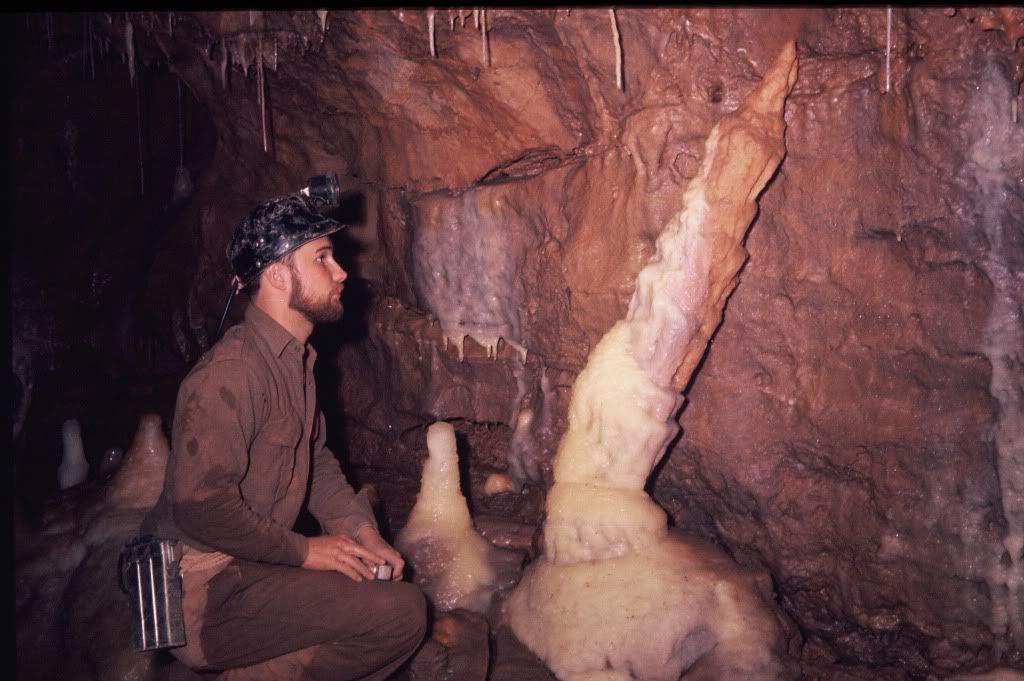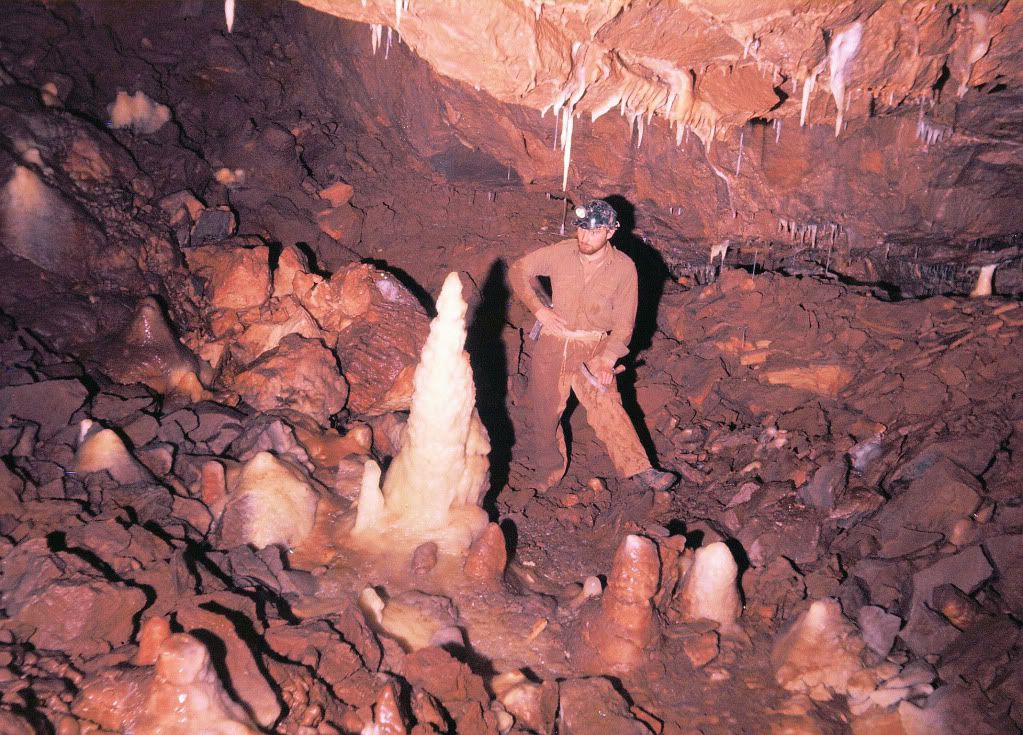Pitlamp
Well-known member
Interesting experience at the end of Malham Cove Rising on Friday last week. Many will know that this has been an ongoing underwater dig for years. We're working underneath a wide expanse of roof which is crazed with cracks and has a habit of falling down in big lumps, hence all the scaffolding work. The slabby limestone overhead is closely associated with the Langscar fault, which is exposed at surface further up the Watlowes valley above the Cove.
The normal technique is to give the roof a right good donging with a steel scaff pole immediately beyond the last section of scaffolding completed then, when it's safe, start work on the next section of scaff. This is then repeated as necessary . . . .
The roof just in front had been tested very carefully and we were happy to work underneath it extending the scaff but two of us had quite large boulders fall onto us (separately) on Friday, together with numerous small fragments. It occurred to me that this was the first dive since the Ripon earthquake on 3rd January and I'm wondering if that has actually disturbed the roof enough to make it unsafe.
This part of the roof has now been scaffolded (today) but has anyone else ever experienced problems in loose areas following an earthquake? If this can happen I think perhaps we ought to try and monitor earthakes before diving at Malham in future - and perhaps be a bit more aware of it in other potentially loose ground in caves elsewhere.
(Mods - please don't move this to the "Yorkshire" page as it's a general question about earthquakes, rather than about a specific cave in the Dales.)
The normal technique is to give the roof a right good donging with a steel scaff pole immediately beyond the last section of scaffolding completed then, when it's safe, start work on the next section of scaff. This is then repeated as necessary . . . .
The roof just in front had been tested very carefully and we were happy to work underneath it extending the scaff but two of us had quite large boulders fall onto us (separately) on Friday, together with numerous small fragments. It occurred to me that this was the first dive since the Ripon earthquake on 3rd January and I'm wondering if that has actually disturbed the roof enough to make it unsafe.
This part of the roof has now been scaffolded (today) but has anyone else ever experienced problems in loose areas following an earthquake? If this can happen I think perhaps we ought to try and monitor earthakes before diving at Malham in future - and perhaps be a bit more aware of it in other potentially loose ground in caves elsewhere.
(Mods - please don't move this to the "Yorkshire" page as it's a general question about earthquakes, rather than about a specific cave in the Dales.)





